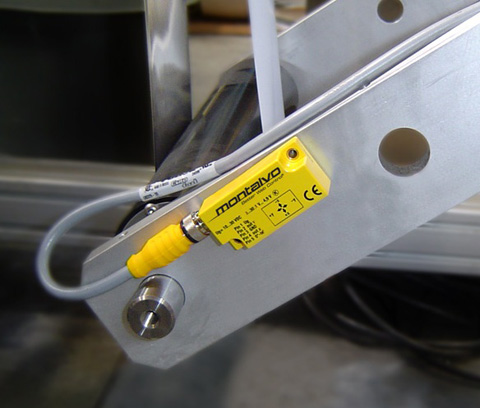
An I/P converter is a current-to-pressure transducer utilized in industrial control systems. It is a small module device used in applications to translate a current analog signal (I) into a pneumatic output (P). In other words, it takes electrical signals from a DC (direct current) signal and converts those signals into proportional pneumatic pressure. I/P transducers convert electrical signals from a controller to apply pneumatic pressure to valves, dampeners, actuators, or brakes and clutches within an industrial mechanism.
Before we go into the details of an IP converter it is important to note that typically there are two types of these converters available, an IP converter and an EP converter. The IP converter most commonly receives a 4-20mA signal and converts it to a pneumatic output. The difference with an EP converter is that it receives a 0-10v signal and converts it to a pneumatic output. The IP converter works with current and the EP converter works with voltage.
IP Converter Working Principle
I/P Converters operate on a similar principle as proportional valves in that they provide adjustable flow volumes and control functions. In converting electric current into pneumatic output, I/P converters also eliminate a need for an external power supply to control the pneumatic operated components. In doing so, I/P converters increase machine efficiency and control.
The function of I/P converters relates to the concept of an electromagnetic force balance principle, i.e., the process of converting electric current into force and then pressure. Simply, for I/P converters to work, electromagnetic effects are exploited to build current which force transducers for mechanical actuation. This action converts electrical current (typically 4 to 20 mA) into pneumatic pressure output (3 to 15 psi) that, in turn, proportionally controls the opening or closing of a valve according to the force balance principle.
As I/P converters operate, they deliver proportional downstream flow of pressure related to the rate of electrical current that is received into the transducer’s electrical circuit. In web tension control systems, I/P converters serve as an important connecting interface between the controller and pneumatic brakes and clutches.
IP Converters in Web Tension Control
Web tension control is employed to measure and adjust tension in a moving web of materials. Paper, film, foil, plastic, wire, cable and textile are all examples of materials transported via a web. Tension control is also required for the winding of products onto rolls for printing, extruding, slitting, coating, or laminating. The proper control of web tension then, produces higher quality products and enables greater throughput dramatically reducing defective or wasted products. Web tension control also ensures processes run at optimal speeds without sacrificing product quality.

Automated tension control processes maintain a programmable amount of stress or strain on a transporting web of material between two points within specific control zones. In automated production, the control of web tension is a seamless and continuous process that ensures consistent, desired properties, and quality.
In load cell and dancer tension control systems, I/P converter applications provide a reliable and accurate means to convert the analog signals to pneumatic output. For example, for dancer roll systems, of the various mechanisms for applying a load force to the dancer – from fixed or moving weights to springs – standard pneumatic cylinders are the most common application. I/P converters offer the best solution for remotely adjustable pneumatic pressure control.
An I/P converter operates on the electromagnetic force balance principle. They are an important component in maintaining consistent web tension control. I/P converters must not only regulate the electrical current signal from the controller and convert it into a regulated pneumatic control signal, i.e., into a proportional pneumatic output, but must also be able to do so accurately with dependability when converting signals. For web tension control, I/P converters offer the necessary high flow rate to provide the rapid response required to accurately control either the dancer or load cell tension control system.
For a closer look at Montalvo’s converter and instructions on how to use it, we would like to invite you to view the YouTube video here:
Montalvo IP Converter Calibration Instructions (video)



